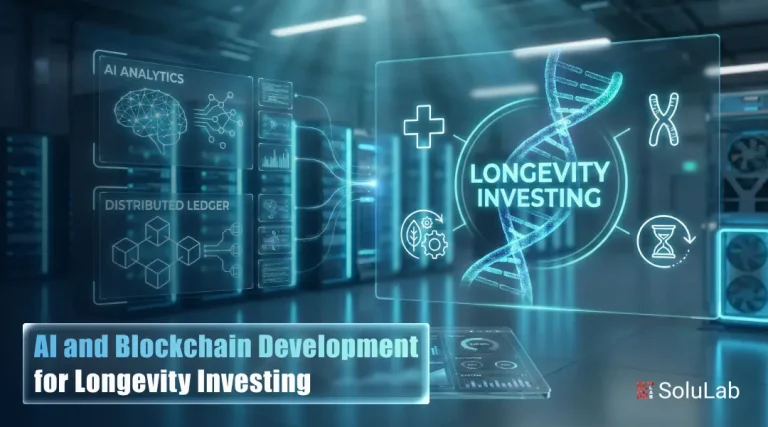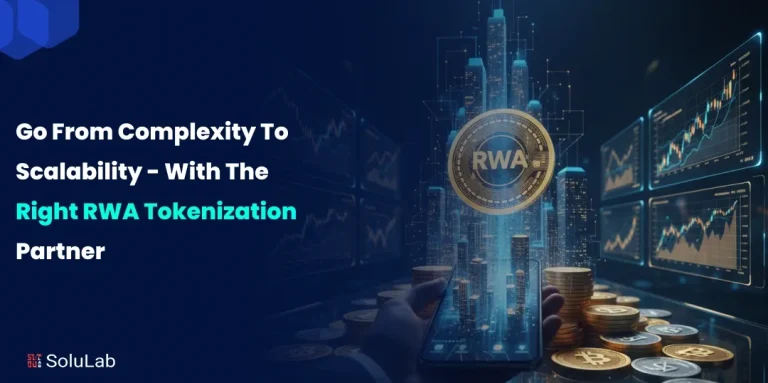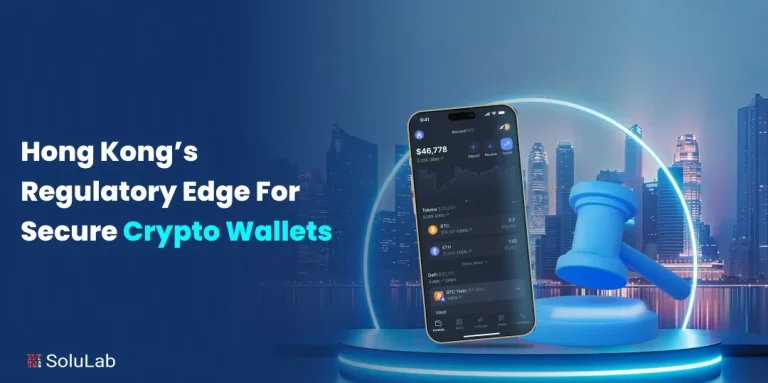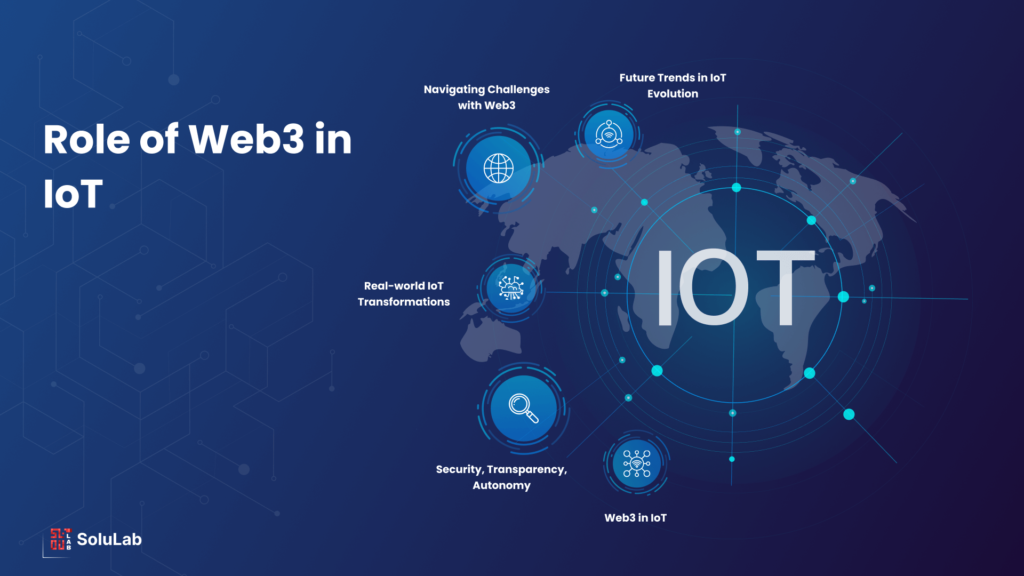
In the ever-changing landscape of technological innovation, the convergence of Web3 and the Internet of Things (IoT) is emerging as a major force for disruption. This blog explores the symbiotic relationship between Web3 and IoT, delving into how the principles of Web3 can transform and elevate the capabilities of connected devices.
Web3 is a new paradigm for the internet that is built on blockchain technology. It promises to be more decentralized, secure, and transparent than the current web. IoT is a network of physical devices that are connected to the internet and can collect and exchange data.
When combined, Web3 and IoT can create a powerful new platform for innovation. For example, Web3 can be used for creating decentralized applications (dApps) that run on blockchains. These dApps can be used to manage IoT devices in a more secure and efficient way.
IoT devices can also be used to collect data that can be used to improve the performance of Web3 applications. For example, IoT devices can be used to track the location of users, which can be used to improve the accuracy of location-based services.
The convergence of Web3 and IoT is still in its early stages, but it has the potential to revolutionize many industries. For example, Web3 and IoT can be used to create more efficient supply chains, improve healthcare delivery, and create new forms of entertainment.
As the convergence of Web3 and IoT continues to evolve, it is likely to create new opportunities for innovation and disruption. Businesses that are looking to stay ahead of the curve should start to explore the potential of this new technology.
Understanding Web3 and IoT
Defining Web3
Web3 represents the third wave of the internet, a decentralized paradigm that redefines the way information is shared and accessed. It thrives on principles like decentralization, transparency, and cryptographic security, offering a departure from the traditional centralized structures of the internet.
- Decentralization is a key principle of Web3, as it means that there is no single point of failure or control. This makes Web3 more resilient to attack and censorship, and it also gives users more control over their data.
- Transparency is another important principle of Web3, as it means that all transactions are recorded on a public blockchain. This makes it possible for users to track their data and ensure that it is being used in a way that they approve of.
- Cryptographic security is the third pillar of Web3, as it ensures that data is secure and cannot be tampered with. This is achieved through the use of cryptography, which is a branch of mathematics that is used to encrypt and decrypt data.
Together, these principles make Web3 a more secure, resilient, and transparent way to share and access information. This has the potential to revolutionize the way we interact with the internet, and it could lead to a more democratic and equitable digital landscape.
The Essence of IoT
On the other hand, the Internet of Things (IoT) encompasses a vast network of interconnected devices, from smart home gadgets to industrial sensors. These devices collect and exchange data, enabling a seamless integration of the physical and digital worlds. IoT has become ubiquitous, driving innovations across industries.
For example, in the healthcare industry, IoT is being used to monitor patients’ vital signs, track their medications, and even provide remote care. In the manufacturing industry, IoT is being used to improve efficiency and productivity by tracking assets, monitoring production processes, and automating tasks. And in the retail industry, IoT is being used to personalize customer experiences by tracking their shopping habits and providing targeted offers.
IoT is still a relatively new technology, but it has the potential to revolutionize many industries. As IoT devices become more sophisticated and affordable, we can expect to see even more innovative applications of this technology in the years to come.
The Intersection: Web3 in IoT
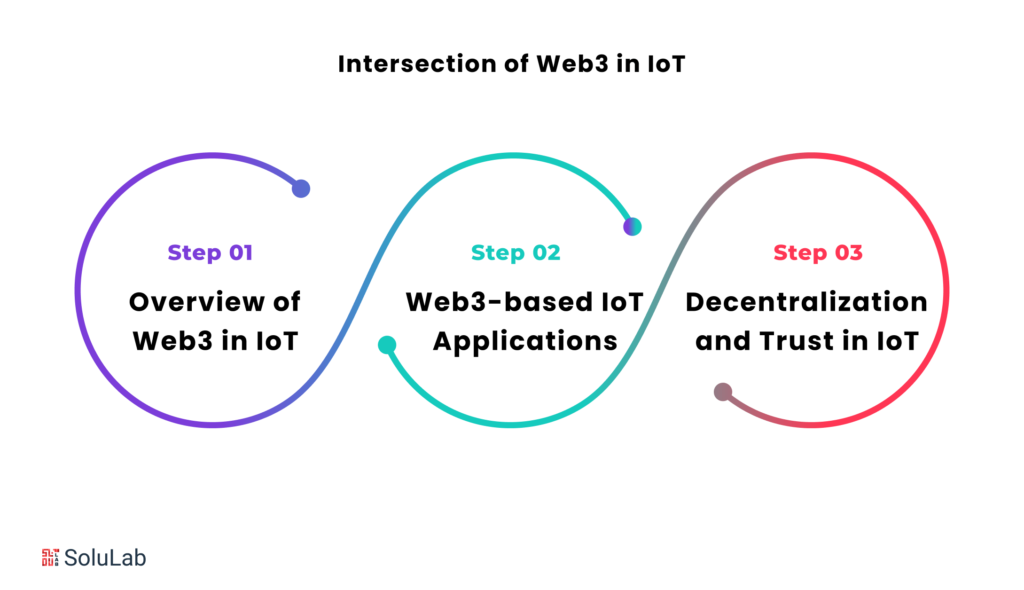
Overview of Web3 in IoT
The fusion of Web3 principles with IoT holds the promise of revolutionizing the way devices communicate and operate. The decentralized nature of Web3 aligns seamlessly with the distributed architecture of IoT, promising enhanced security, transparency, and autonomy.
For example, the use of blockchain technology in IoT can create a secure and tamper-proof way for devices to communicate with each other. This can help to prevent cyberattacks and data breaches, and it can also make it easier to track and trace the movement of goods and services.
In addition, the use of smart contracts in IoT can automate certain tasks and processes, which can improve efficiency and reduce costs. For example, smart contracts can be used to automatically trigger payments when certain conditions are met, or to manage the delivery of goods and services.
Finally, the use of decentralized applications (dApps) in IoT can create new and innovative ways for devices to interact with each other. For example, dApps can be used to create decentralized marketplaces for IoT devices, or to provide real-time data and analytics on IoT networks.
The fusion of Web3 principles with IoT has the potential to create a more secure, efficient, and autonomous world of connected devices. By leveraging the power of blockchain, smart contracts, and dApps, IoT can be transformed into a more powerful and versatile tool for businesses and consumers alike.
Web3-based IoT Applications
Web3 is a new paradigm for the Internet that is built on blockchain technology. It promises to be more decentralized, secure, and transparent than the current web. This has the potential to revolutionize IoT applications, which are often centralized and vulnerable to security breaches.
One of the key benefits of Web3 for IoT is that it can enable secure, trustless interactions between devices. This is because blockchain technology provides a tamper-proof way of storing data. This means that devices can trust each other without having to rely on a central authority. This is essential for applications such as supply chain management, where it is critical to have transparent and tamper-proof records.
Another benefit of Web3 for IoT is that it can make applications more scalable. This is because blockchain technology can be used to create decentralized networks of devices. This means that there is no single point of failure, which can make applications more resilient to attacks.
Overall, Web3 has the potential to revolutionize IoT applications. It can make applications more secure, scalable, and transparent. This could lead to new and innovative applications that are not possible with the current web.
Decentralization and Trust in IoT
Blockchain, a key technology underlying Web3, is playing an increasingly important role in establishing trust among IoT devices. By using decentralized ledgers, IoT devices can securely record and verify transactions, fostering a level of transparency and security that is crucial for critical applications like healthcare and finance.
Here are some of the ways that blockchain is being used to improve trust and security in IoT networks:
- Decentralized ledgers: A decentralized ledger is a distributed database that is shared among multiple nodes on a network. This makes it tamper-proof and impossible to hack, as there is no single point of failure. IoT devices can use decentralized ledgers to securely record and verify transactions, ensuring that data is accurate and cannot be altered.
- Smart contracts: Smart contracts are self-executing contracts that are stored on a blockchain. They can be used to automate transactions between IoT devices, eliminating the need for a third party. This can save time and money, and also improve security by reducing the risk of human error.
- Blockchain identity: Blockchain can be used to create a unique digital identity for each IoT device. This identity can be used to verify the authenticity of devices and to ensure that they are authorized to access certain networks or resources. This can help to prevent unauthorized access and cyberattacks.
Blockchain is still a relatively new technology, but it has the potential to revolutionize the way that IoT devices interact with each other. By providing a secure and tamper-proof way to record and verify transactions, blockchain can help to improve trust and security in IoT networks, making them more reliable and efficient.
Benefits and Challenges
Advantages of Web3 in IoT
The integration of Web3 in IoT brings a multitude of benefits. Enhanced security protocols, decentralized data management, and improved interoperability contribute to a more robust and efficient IoT ecosystem.
- Enhanced security protocols: Web3 uses blockchain technology, which is a secure and tamper-proof way to store data. This can help to protect IoT devices from cyberattacks, as well as ensure that data is accurate and not tampered with.
- Decentralized data management: In traditional IoT architectures, data is typically stored in a centralized location. This can make it a target for cyberattacks, as well as limit the scalability of the IoT network. With Web3, data is stored on a decentralized network of nodes, which makes it more secure and scalable.
- Improved interoperability: Web3 uses open standards, which makes it easier for different IoT devices and Web3 platforms to communicate with each other. This can help to create a more seamless and integrated IoT ecosystem.
These benefits can help to make IoT systems more secure, reliable, and efficient. As a result, Web3 is becoming an increasingly important part of the IoT landscape.
Challenges and Considerations
However, scalability remains a concern, as the sheer volume of transactions in a decentralized network poses challenges. For example, the Bitcoin network can only process a maximum of 7 transactions per second, which is far below the capacity of traditional payment systems. This can lead to congestion and delays, which can be a deterrent for businesses and consumers.
Regulatory frameworks for this evolving landscape also require careful consideration to ensure compliance without stifling innovation. The lack of a clear regulatory framework for cryptocurrencies has led to uncertainty for businesses and investors. This uncertainty can make it difficult to develop and implement new products and services, which can slow down innovation.
Despite these challenges, the potential benefits of blockchain technology are significant. Blockchain can provide a secure and transparent way to record transactions, which can reduce fraud and improve efficiency. It can also be used to create new financial products and services, such as decentralized lending platforms.
As the blockchain industry continues to grow, it is important to address the challenges of scalability and regulation. By doing so, we can ensure that blockchain technology can reach its full potential and deliver real benefits to businesses and consumers.
Real-world Applications
1. Smart Cities
The marriage of Web3 and IoT has profound implications for smart city initiatives. Decentralized networks can optimize traffic management, waste disposal, and energy consumption, creating more sustainable and efficient urban environments.
For example, Web3-enabled traffic management systems can use real-time data from IoT sensors to optimize traffic flow and reduce congestion. This can improve air quality and reduce greenhouse gas emissions, making cities more livable for residents and visitors.
Web3 can also be used to improve waste disposal and recycling. IoT sensors can track the flow of waste through a city, and this data can be used to optimize collection routes and identify areas where more recycling is needed. This can help cities reduce their environmental impact and save money on waste management costs.
Finally, Web3 can be used to improve energy efficiency. IoT sensors can monitor energy usage in buildings and homes, and this data can be used to identify opportunities for energy savings. This can help cities reduce their carbon footprint and save money on energy costs.
Overall, the marriage of Web3 and IoT has the potential to make cities more sustainable, livable, and efficient. By optimizing traffic management, waste disposal, and energy consumption, Web3 can help cities create a better future for their residents.
2. Industrial IoT (IIoT)
In the industrial realm, Web3 transforms Industrial IoT (IIoT) by enabling decentralized control systems. This has a number of benefits, including:
- Predictive maintenance: By using data from sensors and other IoT devices, Web3 can help to identify potential problems before they occur. This can lead to reduced downtime and increased efficiency.
- Supply chain optimization: Web3 can help to track and trace products throughout the supply chain. This can help to improve efficiency and reduce costs.
- Secure data sharing: Web3 can help to ensure that data is shared securely between different parties. This can help to improve collaboration and innovation.
These benefits can help to foster a more agile and efficient industrial landscape. For example, by enabling predictive maintenance, Web3 can help to reduce downtime and increase efficiency. This can give businesses a competitive advantage in a fast-paced and ever-changing market.
In addition to the benefits listed above, Web3 can also help to improve the sustainability of industrial operations. For example, by using data from sensors and other IoT devices, Web3 can help to identify opportunities to reduce energy consumption. This can help to reduce costs and environmental impact.
Overall, Web3 has the potential to transform the industrial landscape by making it more agile, efficient, and sustainable. By enabling decentralized control systems, Web3 can help to improve predictive maintenance, supply chain optimization, and secure data sharing. These benefits can help businesses to gain a competitive advantage and improve their sustainability.
3. Healthcare
In healthcare, the integration of Web3 in IoT ensures the secure and decentralized management of health data. This is a transformative development that has the potential to improve patient privacy and data integrity.
One of the most important benefits of Web3 is its ability to create a secure and decentralized infrastructure for storing and managing health data. This is in contrast to the current system, which is often centralized and vulnerable to security breaches. With Web3, patient data is stored on a distributed ledger, which makes it much more difficult for unauthorized users to access.
Another key benefit of Web3 is its potential to improve patient privacy. In the current system, patient data is often shared with multiple organizations, which can increase the risk of data breaches. With Web3, patients can have more control over who has access to their data. They can also choose to encrypt their data, which makes it even more difficult for unauthorized users to access it.
Finally, Web3 can help to improve data integrity. In the current system, data can be corrupted or lost. With Web3, data is stored on a distributed ledger, which makes it much more difficult to tamper with. This can help to ensure that patient data is accurate and up-to-date.
The integration of Web3 in IoT is still in its early stages, but it has the potential to revolutionize the way healthcare data is managed. By providing a secure, decentralized, and patient-centric approach to data management, Web3 can help to improve patient privacy, data integrity, and overall healthcare quality.
Future Trends
Evolving Technologies
The future of Web3 in IoT involves the integration of advanced technologies like Artificial Intelligence (AI) and machine learning. These technologies amplify the capabilities of connected devices, enabling more intelligent and context-aware interactions.
For example, AI can be used to:
- Automate tasks: AI can be used to automate tasks that are currently performed manually by humans, such as monitoring and responding to sensor data. This can free up human resources for more strategic tasks.
- Optimize operations: AI can be used to optimize operations by identifying and correcting inefficiencies. For example, AI can be used to predict maintenance needs or identify opportunities to reduce energy consumption.
- Personalize experiences: AI can be used to personalize experiences for users by providing them with tailored information and recommendations. For example, AI can be used to suggest products that a user might be interested in based on their past purchases or browsing history.
Machine learning is another important technology that can be used to improve the performance of IoT devices. Machine learning algorithms can be trained to learn from data and make predictions, which can then be used to improve the accuracy and efficiency of IoT systems. For example, machine learning algorithms can be used to:
- Detect anomalies: Machine learning algorithms can be used to detect anomalies in sensor data, which can help to identify potential problems before they cause damage.
- Predict failures: Machine learning algorithms can be used to predict when devices are likely to fail, which can help to prevent unplanned downtime.
- Optimize performance: Machine learning algorithms can be used to optimize the performance of IoT systems by identifying and correcting bottlenecks.
The integration of AI and machine learning with IoT devices has the potential to create a new generation of intelligent, self-aware, and context-aware systems that can revolutionize the way we interact with the world around us.
Decentralized Autonomous IoT
Decentralized Autonomous Organizations (DAOs) are a type of blockchain-based organization that is run by smart contracts. These contracts are self-executing pieces of code that can be used to automate tasks and make decisions without human intervention. In IoT, DAOs can be used to give devices the ability to make autonomous decisions. This can improve the efficiency and responsiveness of interconnected systems.
For example, a DAO could be used to control a network of smart home devices. The DAO could be programmed to automatically adjust the temperature of the house based on the weather, turn on the lights when someone enters the room, and even play music when the user is in a specific mood. This would eliminate the need for the user to manually control each device, and it would make the home more comfortable and efficient.
DAOs can also be used to improve the security of IoT systems. By automating tasks and decisions, DAOs can reduce the risk of human error. Additionally, DAOs can be used to implement security measures that would be difficult or impossible to implement with a traditional centralized system.
The use of DAOs in IoT is still in its early stages, but it has the potential to revolutionize the way we interact with technology. DAOs can make IoT systems more efficient, responsive, and secure. As DAOs continue to develop, we can expect to see them used in a wider variety of IoT applications.
Interconnected Web3-IoT Ecosystems
Looking ahead, the vision is of seamlessly connected ecosystems where devices communicate on decentralized networks. Collaborative projects, driven by the integration of Web3 and IoT, will push the boundaries of innovation and connectivity.
Web3 and IoT are two of the most disruptive technologies of our time, and their combination has the potential to create a new era of innovation. By combining the decentralized nature of Web3 with the real-world connectivity of IoT, we can create new ways for devices to interact with each other and with the world around them.
This could lead to a number of new possibilities, such as:
- Smart cities that are more efficient and sustainable
- Self-driving cars that are safer and more reliable
- Healthcare devices that are more personalized and effective
- Industrial automation that is more efficient and productive
The possibilities are endless, and the only limit is our imagination. By working together, we can build a better future for everyone.
Conclusion
In conclusion, the symbiotic integration of Web3 in the realm of IoT presents a landscape of boundless possibilities, ushering in an era of innovation, security, and decentralization. The transformative impact of Web3 principles on IoT applications showcases a future where connected devices operate with unprecedented autonomy, transparency, and efficiency.
As we navigate the intricate intersection of Web3 in IoT, it becomes clear that the expertise of Web3 development company is pivotal in realizing the full potential of this technological synergy. SoluLab stands as a beacon in the Web3 landscape, offering unparalleled Web3 services and boasting a team of skilled Web3 developers.
SoluLab, a distinguished Web3 development company, has consistently led the way in providing cutting-edge solutions that redefine the digital landscape. Their commitment to excellence aligns seamlessly with the transformative potential of Web3 in IoT, ensuring that businesses and industries can leverage this convergence for optimal results.
Whether it’s developing decentralized applications that redefine traditional IoT functionalities or pioneering solutions that enhance security and data integrity, SoluLab’s expertise places them at the forefront of the Web3 revolution. As a trusted Web3 service provider, SoluLab empowers organizations to navigate the complexities of decentralized networks, creating a future where IoT operates on the principles of transparency, trust, and innovation.
In the interconnected world of Web3, where IoT applications are not just devices but integral components of a decentralized ecosystem, SoluLab remains dedicated to driving the adoption of Web3 technologies. Their comprehensive suite of services ensures that businesses can harness the true potential of Web3 in IoT, unlocking possibilities that were once considered beyond reach.
As we embark on this transformative journey, SoluLab stands as your strategic partner, ready to usher in a new era where the seamless integration of Web3 and IoT fuels innovation, reshapes industries, and propels us into a future where connected devices are not just smarter but operate on the principles of a decentralized, transparent, and secure digital landscape.
FAQs
1. What is the significance of integrating Web3 with IoT applications?
The integration of Web3 in IoT brings forth enhanced security, transparency, and autonomy. It reshapes how devices communicate and operate, offering a more decentralized and efficient ecosystem.
2. How does Web3 impact the security of IoT devices and data?
Web3, with its reliance on blockchain, significantly enhances the security of IoT devices. Decentralized ledgers ensure tamper-proof records, establishing trust among devices and safeguarding sensitive data.
3. Can you provide examples of Web3-based applications in the IoT space?
Certainly, examples include transparent supply chain management, secure healthcare data sharing, and autonomous decision-making among devices through smart contracts.
4. What challenges does the integration of Web3 and IoT pose?
Challenges include scalability concerns in decentralized networks and the need for adapting regulatory frameworks. Navigating these challenges is crucial for a seamless integration.
5. How does SoluLab contribute to Web3 development in the context of IoT?
SoluLab, as a leading Web3 development company, plays a pivotal role in pioneering solutions for Web3-based IoT applications. Their expertise ensures businesses harness the full potential of this technological convergence.
6. What future trends can we expect at the intersection of Web3 and IoT?
Future trends include the integration of AI and machine learning, the rise of decentralized autonomous IoT, and the creation of interconnected ecosystems, all contributing to a more intelligent and collaborative digital future.
7. How can businesses leverage Web3 and IoT for transformative changes?
Businesses can leverage the integration for improved operational efficiency, enhanced security, and innovative applications. Collaborating with a Web3 service provider like SoluLab is key to unlocking the full potential of this synergy.




